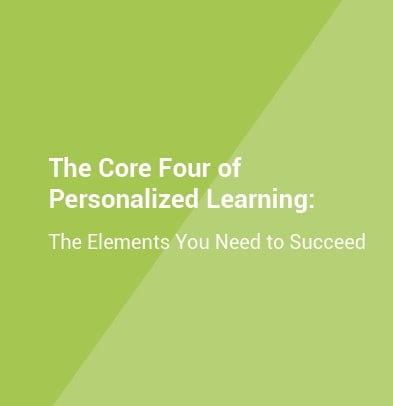Education Elements Newsroom
Ed Elements in the News | Press Release
SAN CARLOS, CALIF. (PRWEB) NOVEMBER 09, 2017 Education Elements is hosting its 4th annual Personalized Learning Summit for district leaders from May 2–4, 2018 in San Francisco, CA. The Summit hosts hundreds of district leaders from all over the country to learn from industry veterans, exchange ideas with peers, and experience cutting edge technology at some of Silicon Valley’s biggest tech companies.
Share
This article is part of the guide The Personalized Learning Toolkit. The consulting firm Education Elements designated four factors as the keys to successfully integrating a personalized learning model, based on its experience with 100 districts, 300 schools and 300,000 students. Those four elements—flexible content and tools, targeted instruction, data-driven decisions and student reflection and ownership—are the Core Four of Personalized Learning. A framework built around the Core Four provides schools with definitions, details and direction, including actionable ideas, tips and insights from districts who have successfully implemented the four elements.
Share

This white paper includes a framework, actionable ideas and insights from districts who have successfully implemented personalized learning, to help you get started.
Ed Elements in the News | Education Elements
Separate from its Playbook that helps define a vision, Education Elements, a consulting firm, helps schools and districts design next-generation teaching and learning models.
Share
Ed Elements in the News | Education Elements | Mentions
The Trump Administration’s 2017 and 2018 education budget proposes some drastic cuts, most notably, the elimination of the $2.3 billion Title II-A (ESEA) funding and $1.2 billion 21st Century Community Learning Centers program. According to the administration, ESEA funding and 21st Century Community Learning Centers programs are ineffective and duplicative. But the budget documents (which consist of more than 27 volumes of artifacts) did not explain why they are ineffective (or with what they are duplicative), though there is no shortage of opinions on both sides of the debate. This is our current reality. Outrage isn’t going to help, so I’m focusing on the actions we can take, given the reality we face.
Share
District Partners in the News | Ed Elements in the News | Education Elements | Mentions
Indiana’s Metropolitan School District of Warren Township is rapidly emerging as a personalized learning leader in the nation’s heartland. The district, one of sixteen winners of federal Race to the Top District grants from the U.S. Department of Education in late 2012, launched its first cohort of five schools implementing personalized instructional models in January 2016. Superintendent Dena Cushenberry and her leadership team chose a deliberative strategy to retool their schools’ teaching approach “to prepare their students for their future, not ours.” They implemented new commitments to professional development for their teachers to master the new pedagogy, embracing participatory innovation and a willingness to experiment. Using short- and long-term goals around growth as personal development plans for teachers and students alike, Warren’s classroom culture evolved into one where personalizing teaching and learning could thrive comfortably. Details follow.
Share
Ed Elements in the News | Education Elements | Mentions
chool and district leaders face a difficult balancing act when it comes to change. On one hand, leaders are expected to drive rapid and complete change, often with academic, enrollment, or other quantitative performance indicators as immediate benchmarks. On the other, bringing change too quickly or forcefully can overwhelm teachers and students, leaving leaders without anything to show for their efforts. With short tenures being common in the role of superintendent as well as principal (each averaging less than five years in the role), it’s no wonder bringing about significant change is difficult, because by the time a leader has established enough credibility to try something new, it is nearly time to move on. It is for this reason that while the most successful change initiatives may start with top leadership, they must also include school leadership teams. These teams, made of teachers, coaches, and school administrators, increase context and credibility among staff, and often have a greater likelihood of sticking around for longer...
Share